Plume-scale confinement on thermal convection
- PMID: 38954544
- PMCID: PMC11252973
- DOI: 10.1073/pnas.2403699121
Plume-scale confinement on thermal convection
Abstract
Despite the ubiquity of thermal convection in nature and artificial systems, we still lack a unified formulation that integrates the system's geometry, fluid properties, and thermal forcing to characterize the transition from free to confined convective regimes. The latter is broadly relevant to understanding how convection transports energy and drives mixing across a wide range of environments, such as planetary atmospheres/oceans and hydrothermal flows through fractures, as well as engineering heatsinks and microfluidics for the control of mass and heat fluxes. Performing laboratory experiments in Hele-Shaw geometries, we find multiple transitions that are identified as remarkable shifts in flow structures and heat transport scaling, underpinning previous numerical studies. To unveil the mechanisms of the geometrically controlled transition, we focus on the smallest structure of convection, posing the following question: How free is a thermal plume in a closed system? We address this problem by proposing the degree of confinement [Formula: see text]-the ratio of the thermal plume's thickness in an unbounded domain to the lateral extent of the system-as a universal metric encapsulating all the physical parameters. Here, we characterize four convective regimes different in flow dimensionality and time dependency and demonstrate that the transitions across the regimes are well tied with [Formula: see text]. The introduced metric [Formula: see text] offers a unified characterization of convection in closed systems from the plume's standpoint.
Keywords: heat transport; hydrothermal systems; thermal convection.
Conflict of interest statement
Competing interests statement:The authors declare no competing interest.
Figures
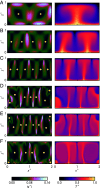
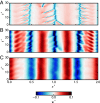
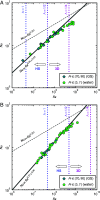
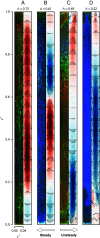
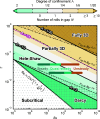
References
-
- Atkinson B., Wu Zhang J., Mesoscale shallow convection in the atmosphere. Rev. Geophys. 34, 403–431 (1996).
-
- Margirier F., et al. , Characterization of convective plumes associated with oceanic deep convection in the northwestern mediterranean from high-resolution in situ data collected by gliders. J. Geophys. Res. Oceans 122, 9814–9826 (2017).
-
- Sohail T., Gayen B., Hogg A. M., Convection enhances mixing in the Southern Ocean. Geophys. Res. Lett. 45, 4198–4207 (2018).
-
- Doering C. R., Constantin P., Bounds for heat transport in a porous layer. J. Fluid Mech. 376, 263–296 (1998).
-
- Liu S., et al. , From Rayleigh-Bénard convection to porous-media convection: How porosity affects heat transfer and flow structure. J. Fluid Mech. 895, A18 (2020).
Grants and funding
LinkOut - more resources
Full Text Sources
Medical

